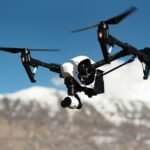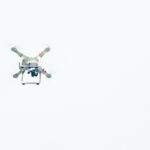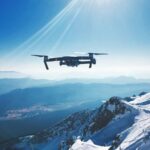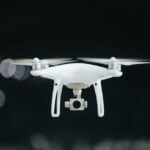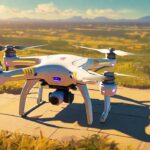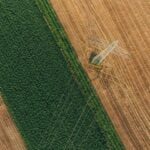As technology continues to advance at a rapid pace, its impact on various industries becomes increasingly evident. One particularly intriguing area is the use of drones in law enforcement. In this article, we will explore the practical applications, benefits, and ethical concerns surrounding drones in the realm of crime prevention, surveillance, search and rescue operations, and public safety. Join us as we dive into the fascinating world of drones in law enforcement, uncovering their potential to revolutionize how our communities are protected and served.
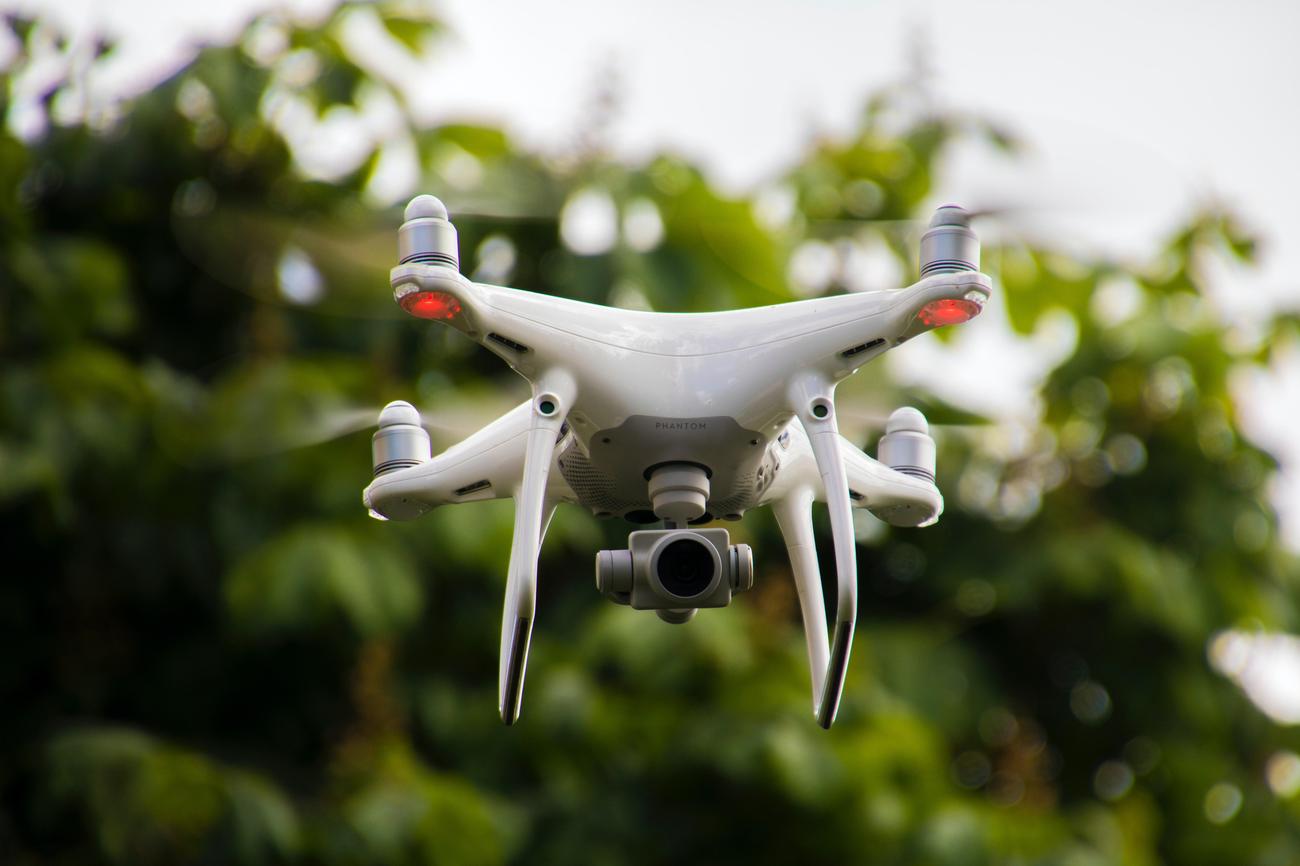
Drones in Law Enforcement
Law enforcement agencies are increasingly utilizing drones in law enforcement for a range of purposes, revolutionizing traditional methods and enhancing overall effectiveness. These unmanned aerial vehicles offer practical applications that have proven invaluable in scenarios such as traffic crash reconstruction, SWAT operations, search and rescue missions, and even hostage situations. While there are undeniably many benefits to be gained, it is crucial to address the ethical concerns surrounding their use as well.
Crash scene investigations have been transformed by the introduction of drones. With their ability to capture highly accurate aerial imagery, drones can provide a comprehensive view of a crash site in a fraction of the time it takes with traditional methods. They can even generate three-dimensional models that aid in reconstructing the scene. This technology not only increases efficiency but also enables officers to quickly clear the area, minimizing further disruption to traffic flow and reducing the risk of additional accidents.
In pre-tactical deployment reconnaissance, drones offer law enforcement agencies important advantages. By providing early reconnaissance of potentially dangerous scenes before officers engage, these devices significantly enhance officer safety. Their aerial perspective allows for a comprehensive assessment of the situation, enabling law enforcement to develop effective strategies and minimize potential risks. This real-time information can be invaluable in making informed decisions and ensuring successful outcomes.
During SWAT operations, drones play a crucial role in providing overwatch support. The ability to stream live video feeds from the drone’s vantage point helps SWAT teams monitor the situation as they advance. This real-time visual information enhances situational awareness, enabling teams to rapidly adapt their tactics and respond to evolving circumstances. With drones serving as an extra set of eyes overhead, law enforcement agencies can operate more effectively and efficiently.
Patrol-deployed drones offer a quick response solution for law enforcement agencies. Often stored in patrol vehicles, these drones can be rapidly deployed at incident scenes to provide crucial situational awareness. Furthermore, their ability to locate subjects means that officers can arrive at the scene with vital information already at their disposal. These drones act as force multipliers, allowing law enforcement to respond swiftly and effectively to any situation they may encounter.
In hostage situations, the deployment of drones allows law enforcement to gather critical information about the location of hostages and suspects without putting officers at undue risk. By positioning the drone to see into windows or other inaccessible areas, law enforcement gains valuable insights about the situation without compromising tactical operations. This advance intelligence empowers officers to make better-informed decisions and improves the overall safety of everyone involved.
One of the key reasons law enforcement agencies are embracing drones is their cost-effectiveness. Traditional methods of aerial surveillance are expensive and often require extensive resources. With drones, agencies have access to a more affordable solution that provides improved operational effectiveness and real-time situational awareness. In fact, over 5,000 public safety agencies, with two-thirds being law enforcement agencies, have already implemented drone programs.
The speed at which drones can respond to incidents is another remarkable advantage they provide. In many cases, they can arrive on the scene faster than conventional response methods. This makes them ideal first responders in situations where time is of the essence, such as search and rescue operations. The ability to quickly survey large areas and identify potential hazards can be life-saving, allowing law enforcement to pinpoint missing persons or provide assistance to those in need more efficiently.
However, it is crucial to consider the ethical concerns surrounding the use of drones in law enforcement. While they undoubtedly provide many benefits, the potential for misuse and invasion of privacy exists. Striking a balance between public safety and individual privacy is critical. Law enforcement agencies must ensure they have robust policies and safeguards in place to prevent abuses and protect the rights of citizens.
In conclusion, the use of drones in law enforcement offers numerous practical applications and benefits. From crash scene investigations to SWAT operations and search and rescue missions, drones have proven to be invaluable tools for enhancing the effectiveness of law enforcement agencies. However, it is essential to recognize and address the ethical concerns associated with their use. By maintaining transparency, implementing strong oversight, and respecting individual privacy rights, drones can continue to play a vital role in promoting public safety and serving the community.
“Drones provide law enforcement agencies with a powerful set of tools, revolutionizing traditional methods and enhancing officer safety. However, it is crucial that their use is guided by robust policies and safeguards to protect individual privacy and prevent misuse.”
Drones have become an integral tool for law enforcement agencies across the globe. If you’re curious about the fascinating ways these unmanned aircrafts are being used in the field of law enforcement, we have got you covered! Our website provides a comprehensive list of facts about drones in law enforcement, giving you insight into their capabilities and the impact they have on crime prevention and public safety. Click here to explore the exciting world of drones in law enforcement: facts about drones law enforcement. Don’t miss out on this opportunity to discover how drones are revolutionizing the way we enforce the law and keep our communities secure.
FAQ
Q: What are some practical applications of drones in law enforcement?
A: Drones are used by law enforcement agencies for traffic crash reconstruction, pre-tactical deployment reconnaissance, SWAT operations, patrol-led deployment, and hostage situations. They can accurately capture crash scenes, provide early reconnaissance of dangerous scenes, offer overwatch in SWAT operations, and provide situational awareness in patrol deployments and hostage situations.
Q: How do drones enhance officer safety in pre-tactical deployment reconnaissance?
A: Drones allow for early reconnaissance of dangerous scenes before police operations, providing law enforcement officers with valuable information and enhancing their safety during operations.
Q: What is the role of drones in SWAT operations?
A: Drones are used in SWAT operations to provide overwatch as the team advances. They can stream real-time footage, allowing the team to gather valuable visual intelligence.
Q: How do patrol-deployed drones contribute to public safety?
A: Patrol-deployed drones, stored in patrol vehicles, can be quickly deployed at incident scenes. They provide situational awareness, aid in locating subjects, and assist in decision-making for law enforcement officers responding to emergencies.
Q: In what ways are drones cost-effective for law enforcement agencies?
A: Drones offer cost-effective solutions for conducting aerial surveillance, gathering evidence in investigations, and providing improved operational effectiveness and real-time situational awareness. They can be more efficient and resource-friendly compared to conventional response methods.
- Discover Long Black Pepper: Flavor & Health Benefits - April 25, 2025
- Shocking Twists: The Grownup Review: Unreliable Narration - April 25, 2025
- A Quiet Place Book vs Movie: A Deep Dive - April 25, 2025

